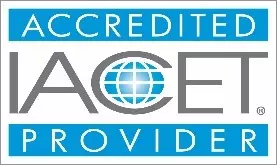Program Overview
This is a two-week foundational training course that addresses the fundamentals of risk management bank supervision including basic bank analysis and Report of Examination (ROE) preparation. The skills taught include verifying the Call Report; identifying and calculating pertinent ratios for capital, earnings, and liquidity; identifying elements of strong internal routines and controls program; identifying regulatory-defined asset and funding concentrations; and determining the impact of a bank’s investment portfolio on its financial condition. The course also covers assigning capital, earnings, and liquidity component ratings, writing well-supported comments, and conducting effective meetings with bank management.
Target Audience
FDIC participants should attend in accordance with the parameters outlined in the Examiner Training and Development Policy. State Banking authority students should have at least two months risk management bank examination experience. This course is open to appropriate staff of the FDIC and partner government agencies. This course is not open to the public or staff of private banks.
Prerequisites and Prior Work Experience
Prior to attending the course, participants should have some exposure to the following: (Note: Exposure may include completing the task, assisting someone else with the task, or some other means to become aware of the concepts)
- Examination tools:
- Call Report instructions
- Uniform Bank Performance Report (UBPR)
- Risk Management Manual of Examination and Report of Examination Instructions pertaining to Statement of Condition, Earnings, Capital, Liquidity and Risk Management Assessment pages
- The California Spread of the Balance Sheet and Income Statement in accordance with Call Report Instructions
- Schedule RC-B Securities in accordance with Call Report instructions
- Capital component:
- Risk-weighting of on-balance sheet and off-balance sheet items
- Verifying accuracy of schedule RC-R Regulatory Capital in accordance with Call Report instructions
Credits
Continuing Education Units (CEU): 7.0
Continuing Professional Education Units (CPE): 84.6
More Information

For information regarding administrative policies such as complaints and refunds, please contact Corporate University, Attn: NASBA Representative Ava Livas, Room A-3025, 3501 North Fairfax Drive, Arlington, VA 22226 (703) 562-2463.
The Federal Deposit Insurance Corporation is registered with the National Association of State Boards of Accountancy (NASBA) as a sponsor of continuing professional education on the National Registry of CPE Sponsors. State boards of accountancy have final authority on the acceptance of individual courses for CPE credit. Complaints regarding registered sponsors may be submitted to the National Registry of CPE Sponsors through its website: NASBARegistry.org.

The Federal Deposit Insurance Corporation (FDIC) is accredited by the International Association for Continuing Education and Training (IACET) (www.iacet.org). The FDIC complies with the ANSI/IACET Standard, which is recognized internationally as a standard of excellence in instructional practices. As a result of this accreditation, the FDIC is accredited to issue the IACET CEU.
For more information concerning course content and administration, please contact Mariah Candrian or LeAnn Dugger.
